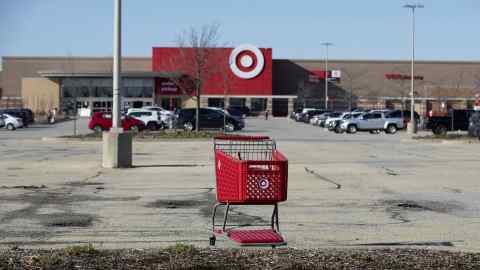
Walmart has issued its second profit warning in 10 weeks, signaling a further deterioration in the U.S. retail environment as inflation weighs on the price-sensitive consumers the world’s largest retailer relies on.
“Rising levels of food and fuel inflation are affecting the way customers spend,” said Doug McMillon, Walmart’s chief executive. He said the company had made “good progress” in clearing inventory in “durables” or consumer durables categories such as appliances and furniture, but needed to increase apparel sales at its U.S. stores .
In a statement after the close of trading in New York on Monday, just three weeks before the company reports earnings for the three months to July, Walmart warned that its operating income would fall 13 to 14 percent during the quarter and 11 percent. to 13 percent throughout the year as it discounts merchandise to eliminate excess inventory.
In May, in its latest earnings announcement, it said operating income would be “flat to slightly up” in the second quarter and down just 1% for the full year. It had given similar guidance for earnings per share, which it now expects to fall 8 to 9 percent in the second quarter and 11 to 13 percent for the full year on an adjusted basis.
Walmart’s warning sent its shares down nearly 10 percent to $118.97 in after-hours trading, shaving about $35 billion from its market capitalization. That led to a sell-off in shares of rivals such as Target, Costco and Home Depot, while Amazon’s fell more than 4%.
In May, Walmart’s stock suffered its biggest one-day drop since 1987, when it first cut guidance for the coming quarters.
Investors have become increasingly concerned that retailers will have to discount unsold products as rising prices and a shift in spending from goods to services coincide with efforts by stores to bring holiday merchandise earlier early to avoid the supply chain disruptions that plagued the industry before the coronavirus. pandemic
“We’re seeing this shift in spending away from retail and we’re seeing a slowdown in spending as consumers get squeezed by high inflation and rising rates,” said Greg Daco, chief economist of EY-Parthenon. “That pressure is likely to continue.”
Weakening demand in the face of these pressures may force retailers to offload unsold inventory and accept lower margins, added James Knightley, chief international economist at ING. “While not good news for businesses, it could help the Federal Reserve as it desperately tries to get inflation back toward [its target] of 2 percent,” he said.
Walmart said comparable sales at its U.S. stores would be higher than previously expected, up 6 percent in the second quarter excluding fuel, although that reflected higher spending on food, for in which inflation is in double digits and the company has lower profit margins. .
recommended
“This is affecting customers’ ability to spend on general merchandise categories and requiring more markdowns to move through inventory, particularly apparel,” he warned.
Walmart said it had made progress reducing inventory in the second quarter and was “managing prices” to reflect inflation and higher supply chain costs. McMillon added that he was also encouraged by the start of the back-to-school season, but cautioned that the company expected more pressure on general merchandise sales in the second half of the year.
As with other US multinationals, Walmart is suffering from the strength of the dollar, which caused a “headwind” of about one billion dollars in its second quarter sales. Based on current exchange rates, a monetary impact of $1.8 billion is expected in the second half of the year.
[ad_2]
Source link


